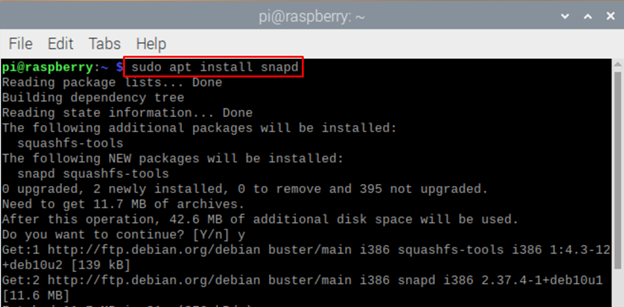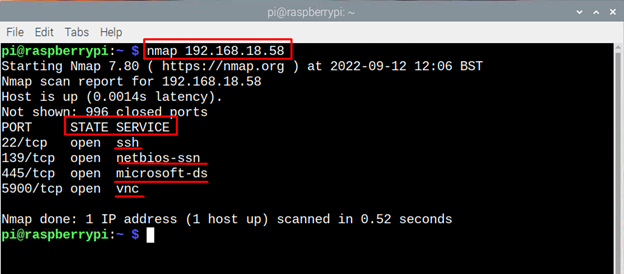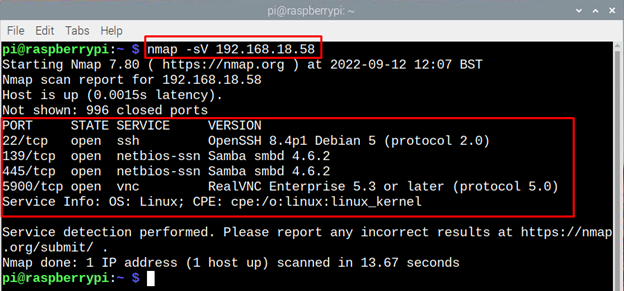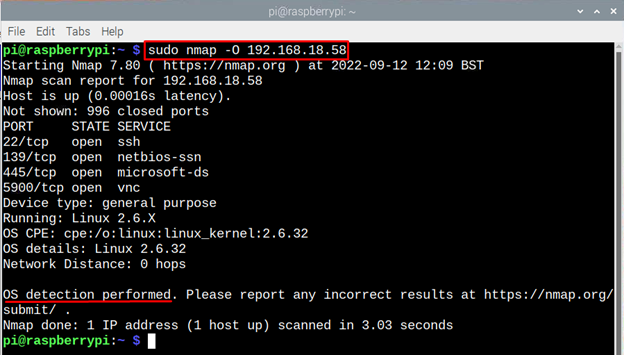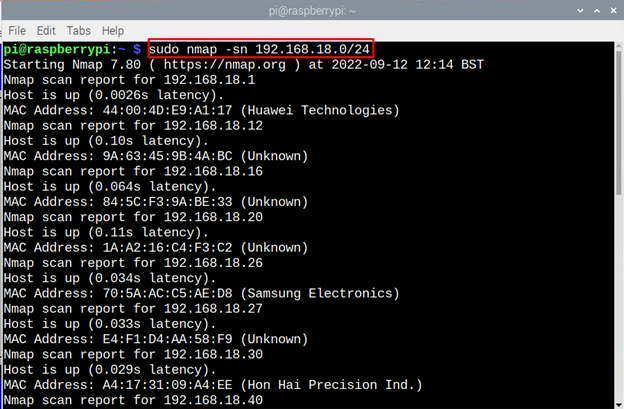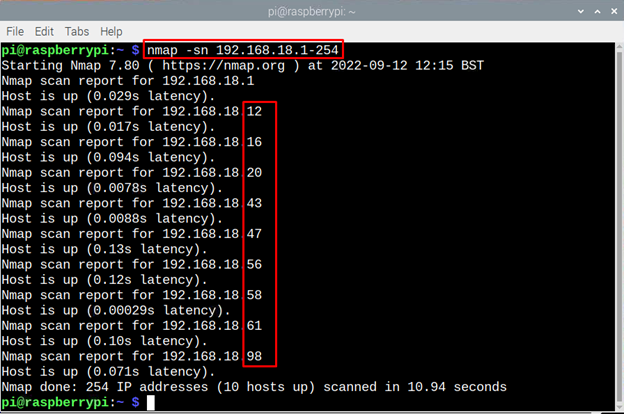Installing NMAP on Raspberry Pi
The process of installing the NMAP tool is quite easy, so go through the steps below:
Step 1: Update the packages list of apt package manager using:
Step 2: Next install the snapd package manager by using the following command:
Step 3: To apply the changes reboot your Raspberry Pi:
Step 4: Now install the core that is a runtime environment for the snapd packages:
Step 5: Finally, execute the following command to install NMAP tool:
Now just to be sure use the following command to see what version of NMAP is installed on Raspberry Pi:
Using NMAP Tool on Raspberry Pi
To use the NMAP tool first all you need to know is to IP address of your Raspberry Pi which can be found by using the given command:
To check which services are running on your Raspberry Pi execute the nmap command with the IP address of your Pi:
Next if you want to check what software is provided behind the server of each open ports using the following command:
You can use the nmap tool for the detection of operating system:
If you want to see other devices connected to the same network on which your Pi is connected, then use the command:
To arrange the devices connected with the same network as that of the Pi give the address range using the following command and you will see all the active hosts on the network:
You can also short the range if you are looking for some specific hosts or you can scan more than one hosts at a time by stating their IP and using the nmap tool:
Conclusion
Network security and monitoring is sort of necessary as most of the potential viruses attack the system mainly through the internet. Raspberry Pi is a Linux based system which is quite secure but still it might need network security. NMAP is a sort of network monitoring tool that not only audits the security of the system but also scans the network and gets the details of the other devices connected to the same network. You can install NMAP using the snap package manager on your Pi, using NMAP you can see a list of other devices connected, and the services running on your Pi and some other features.


